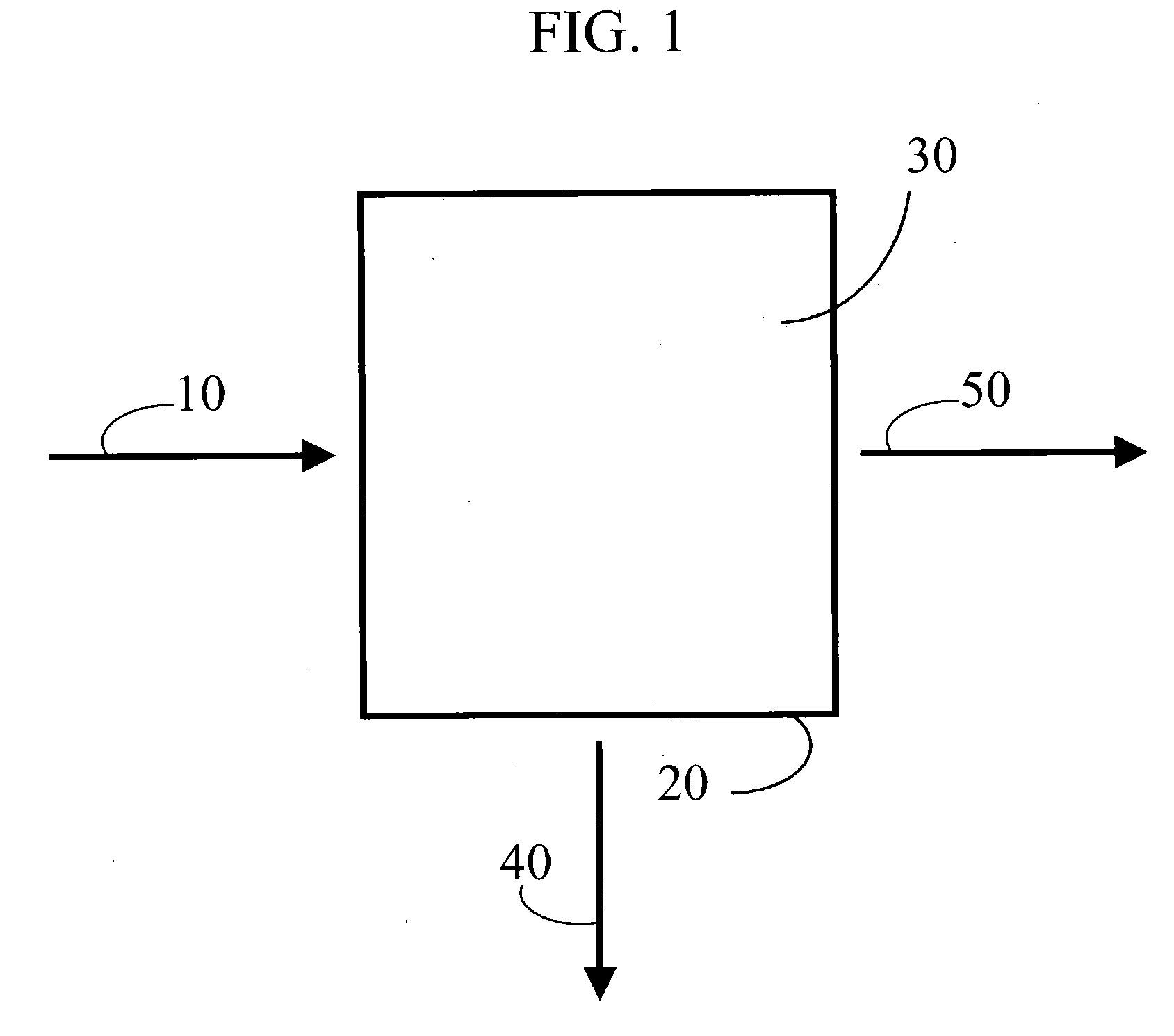Method of removing mecury from exhaust gases
a technology of exhaust gas and mecury, which is applied in the direction of dispersed particle separation, colloidal chemistry, and separation processes, etc., can solve the problems of mercury exposure to high levels, serious neurological and developmental effects in humans, and harm to people who eat mercury-contaminated fish
- Summary
- Abstract
- Description
- Claims
- Application Information
AI Technical Summary
Benefits of technology
Problems solved by technology
Method used
Image
Examples
example 1
[0035] Synthesized mordenite was crushed to a particle size smaller than 45 micrometers and leached for four hours at 90° C. in a 1 N (normality) solution of HCl, having 30 grams of zeolite per liter of the solution. After leaching, the zeolite was washed until the wash solution was free of chloride, as tested by silver nitrate. The acid-leached and washed zeolite was dried at 110° C. The thus-prepared hydrogen mordenite was placed over a small mercury sample, and the hydrogen mordenite and the mercury sample were soaked at 200° C. for twenty-four hours. Upon removal, the mordenite had turned brown. When heated to 405° C., the mercury-bearing mordenite expelled a vapor from which mercury was condensed. The mercury condensate was 22% by weight of the mercury-bearing mordenite before distillation. The purged hydrogen mordenite was recovered and reused for a second adsorption cycle.
example 2
[0036] Synthesized mordenite was crushed to pass a 100 mesh screen. The crushed mordenite was leached in a solution of 2.23% concentrated nitric acid in water, with 25 grams of mordenite per liter. The acid leach was at 80 to 90° C. for four hours, followed by washing and drying. The mordenite and a mercury sample were soaked at 184° C. for six hours. The product was red-brown mercury-bearing mordenite.
example 3
[0037] The procedure of example 2 was repeated using 2.07% concentrated sulfuric acid in water for the acid leach. The product was red-brown mercury-bearing mordenite.
PUM
| Property | Measurement | Unit |
|---|---|---|
| Temperature | aaaaa | aaaaa |
| Temperature | aaaaa | aaaaa |
| Temperature | aaaaa | aaaaa |
Abstract
Description
Claims
Application Information
 Login to View More
Login to View More - R&D
- Intellectual Property
- Life Sciences
- Materials
- Tech Scout
- Unparalleled Data Quality
- Higher Quality Content
- 60% Fewer Hallucinations
Browse by: Latest US Patents, China's latest patents, Technical Efficacy Thesaurus, Application Domain, Technology Topic, Popular Technical Reports.
© 2025 PatSnap. All rights reserved.Legal|Privacy policy|Modern Slavery Act Transparency Statement|Sitemap|About US| Contact US: help@patsnap.com


